Nestled amongst the oak-covered hills of rural northwest Pennsylvania until very recently sat an iron artifact from a bygone era. Built in 1876 by the Wrought Iron Bridge Company of Canton, Ohio, this elegant, metal arch structure is what is termed, in historical bridge parlance, as a bowstring through-truss.
Originally owned and maintained by Crawford County, it has gone by numerous names over the years, including East Titusville Bridge, Pine Creek Bridge and, more recently, Messerall Road Bridge. Whatever name it goes by, it is now more commonly known for being the last of its kind in western Pennsylvania.
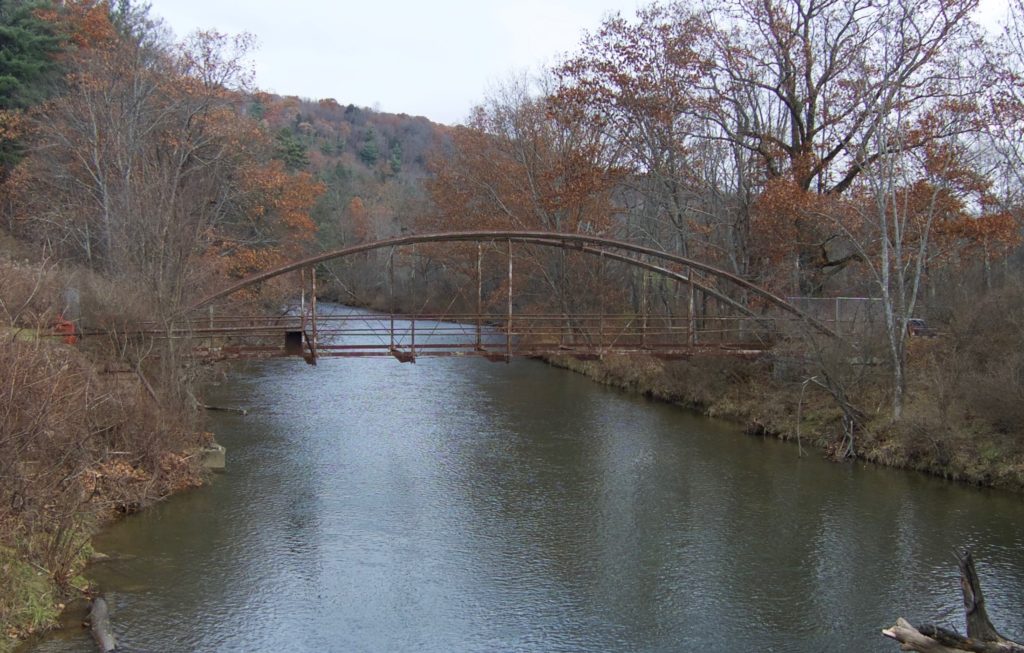
Though once numerous, bowstring through-truss bridges are now exceedingly rare. All but a handful have gone the way of the dinosaur, having long-since given way to their modern successors. To find one, decommissioned for thirty-four years, yet remarkably intact, is tantamount to a surprise encounter with a creature from the late Cretaceous, somehow landlocked but flourishing in the local mill pond.
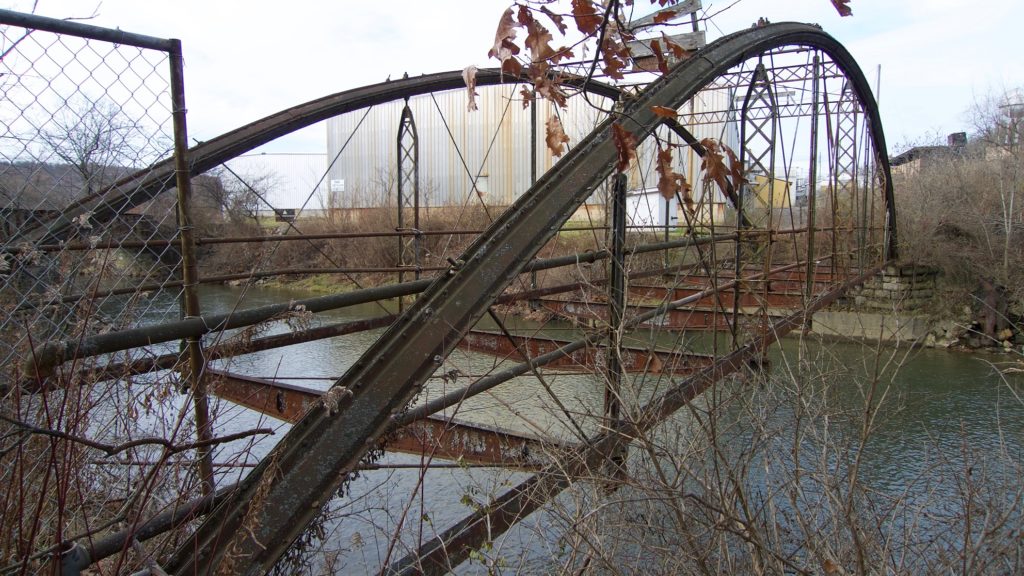
The circumstances under which a structure of this age and significance might go largely unnoticed for so long begs the question: How do these things happen?
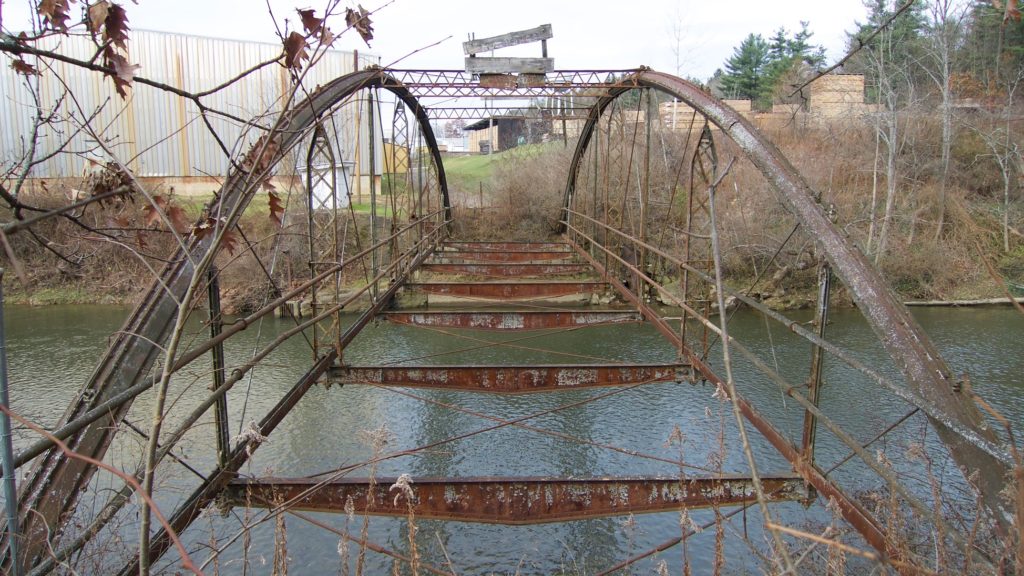
The end of an era came in 1987, when an expanding lumber mill engulfed the western end of what had been a through thoroughfare. With nowhere to go, the remaining segment of Messerall Road was reduced to an unimproved, cul-de-sac, punctuated at its end by one very unusual, and precious, wrought iron bridge. By virtue of its historical significance, as an engineering marvel, and its remote location, Crawford County administrators were content to let sleeping dogs lie.
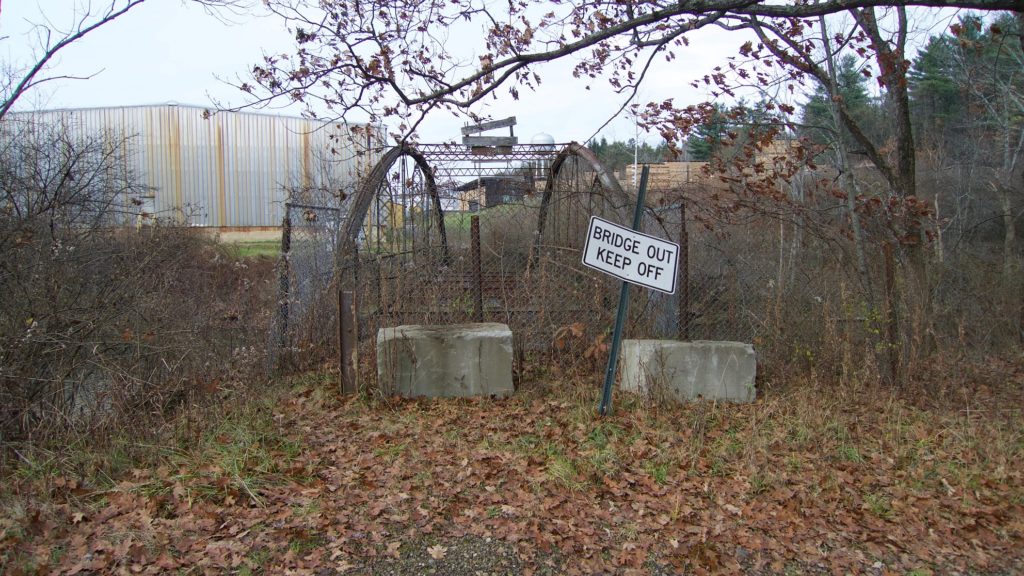
Cut off from the transportation network, and stripped of its deck, Messerall Road Bridge became something of a curiosity. Like a boat stranded in a dry lake or a depot without a railroad, spectators were left to stitch together the missing pieces in their mind.
One might conjure ghostly shadows of those who have come and gone before us, rattling the timber deck of the iron span in horse-drawn buckboard or Model T Ford. That is the magic of historic structures: they are that thread of continuity through time and space, linking generations past, present, and future, forever inviting reflection upon our ever-evolving world.
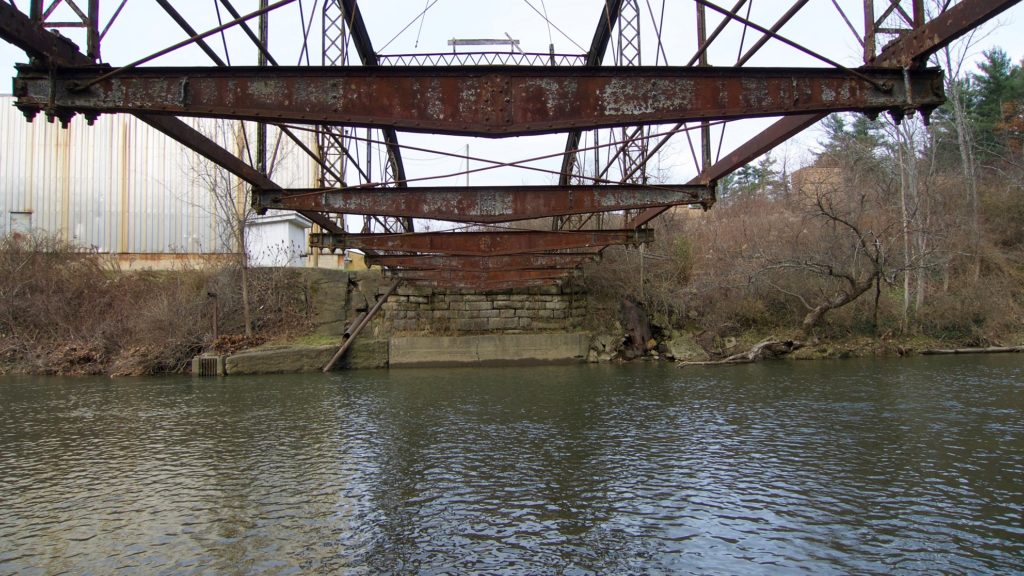
Curiosity alone, however, does not a preservation success story, make. A bit of luck, a twist of fate, and a team of dedicated visionaries have all played a role in the next chapter of this bridge’s ongoing story.
Following several years of negotiations between local, state, and federal agencies, a new steward was identified in the Pennsylvania Department of Conservation and Natural Resources (PA DCNR), who warmly embraced the bridge, planning to incorporate it into their Pymatuning Spillway Trail Extension in western Crawford County.
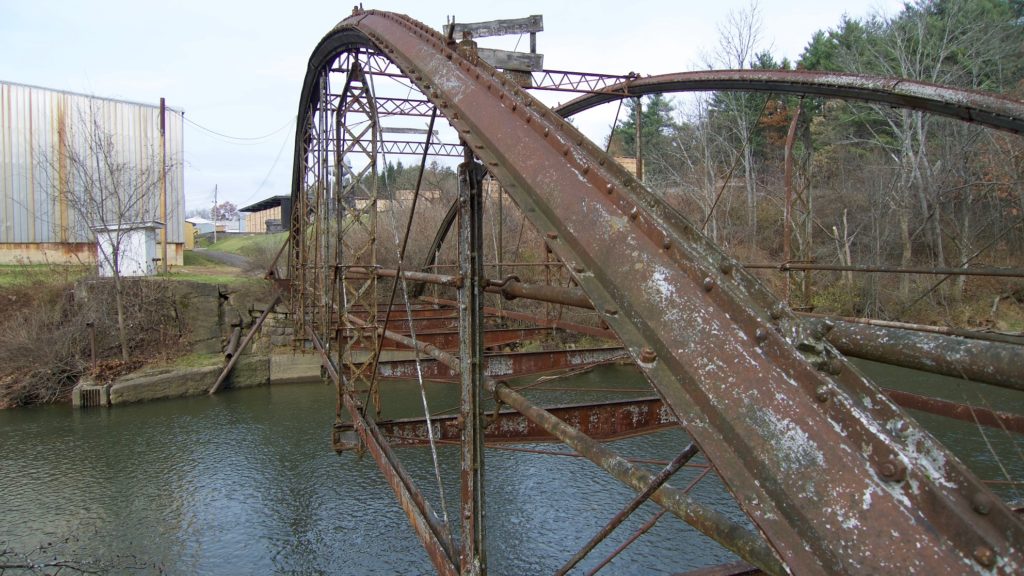
Except for periodic inspections, the bridge had sat largely neglected for the past thirty-four years, meaning that the wrought iron fabric required a thorough overhaul before beginning its next career as a recreational trail bridge. In addition to needed patches and assorted repairs, hundreds of missing rivets required replacement throughout the twin, tubular girders that comprise the bridge’s arched top chord. Once a common method for fastening metal structural members, hot riveting is now a specialty skill, practiced only by those who dabble in the art of blacksmithing and the traditional trades.
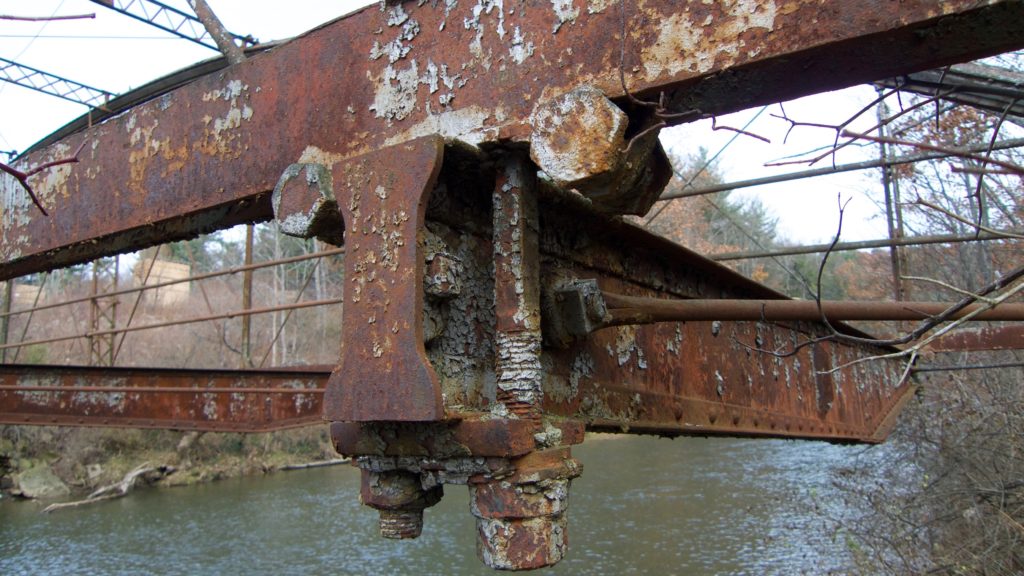
A trip to the shop, however, was not possible without first negotiating the most critical phase of metal truss rehabilitation: the lift. Early August this year, following a carefully calculated plan, a team of specialists painstakingly rigged the bridge for a slow and unnerving flight over the adjacent treetops.
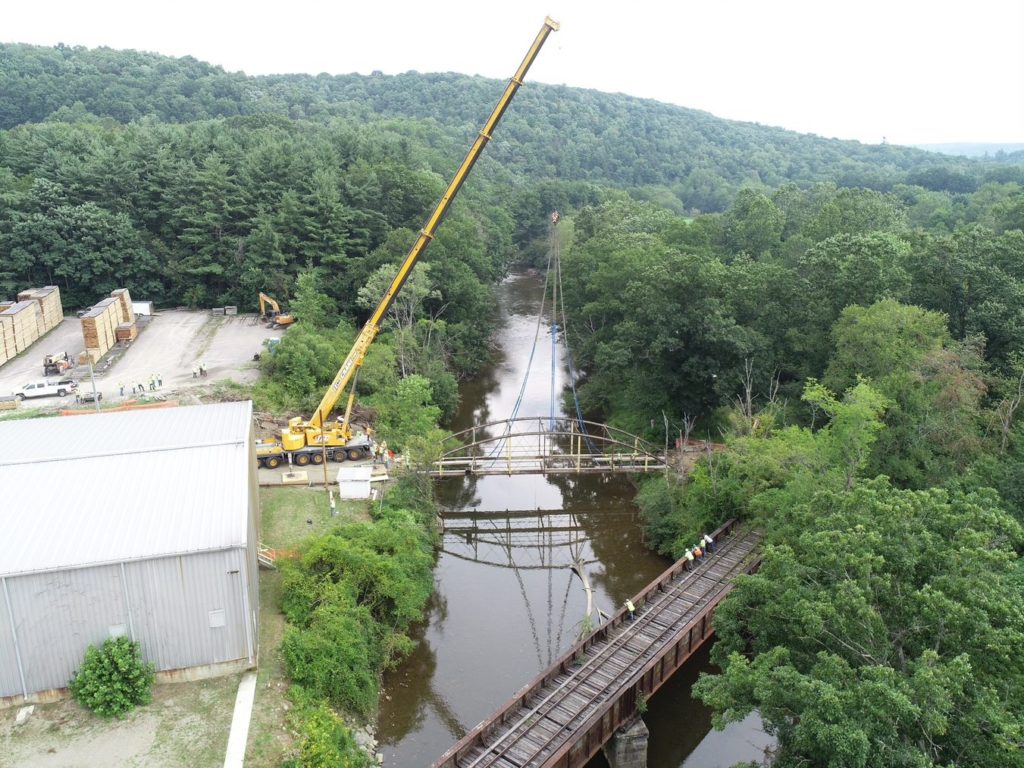
The bridge’s arched configuration, light construction, and questionable structural integrity posed unique challenges to this otherwise routine procedure. Lifting it from the lower chord, the only practical option, would have generated unwanted stresses on its spindly vertical members as they pushed against the underside of the arch. The danger being the bridge would crush itself as the crane lifted it from the abutments.
To avoid catastrophe, a finely tuned matrix of reinforcing steel, straps, and lumber was required to prepare the bridge for forces for which it was never intended. Like an unpleasant medical exam, this was just something that had to be done, and the sooner it was over, the better.
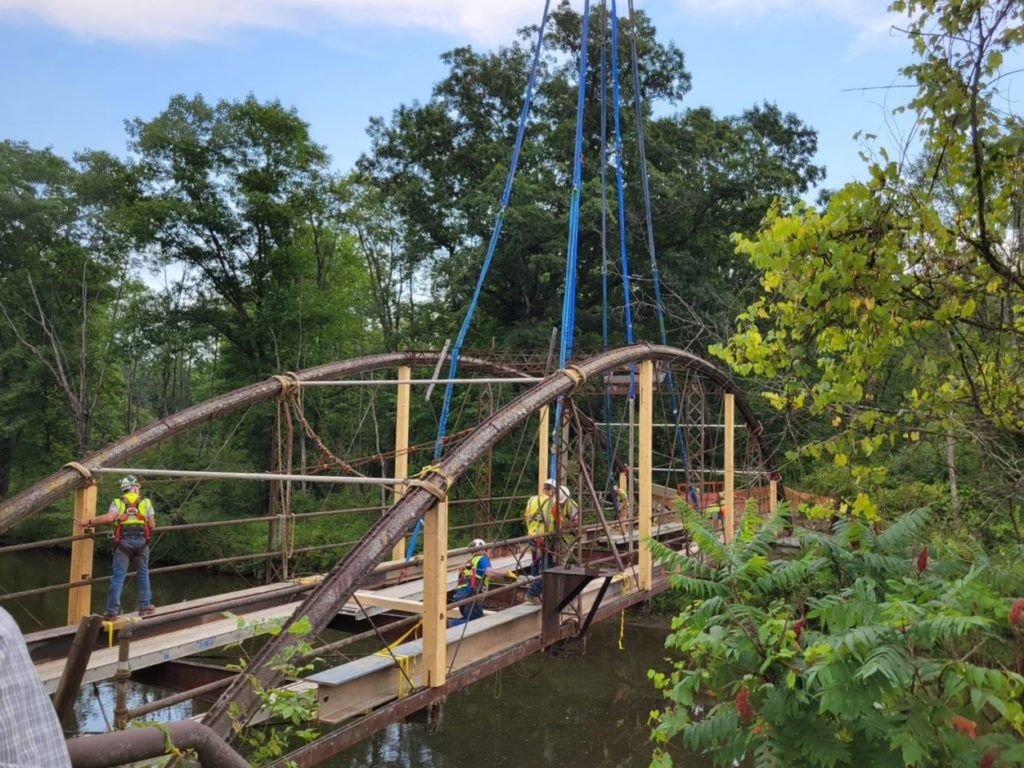
Following several hours of preparation, it was time to test the engineering calculations. Workers vacated the bridge, and the crane ever-so-gently applied tension to the rigging. Silently, almost imperceptibly, the bridge was freed of the abutments and, for the first time in 145 years, there was air beneath its feet. Swaying gently, the bridge began its move to one side of the creek, and it soon became apparent that it was snug and secure in its restraints.
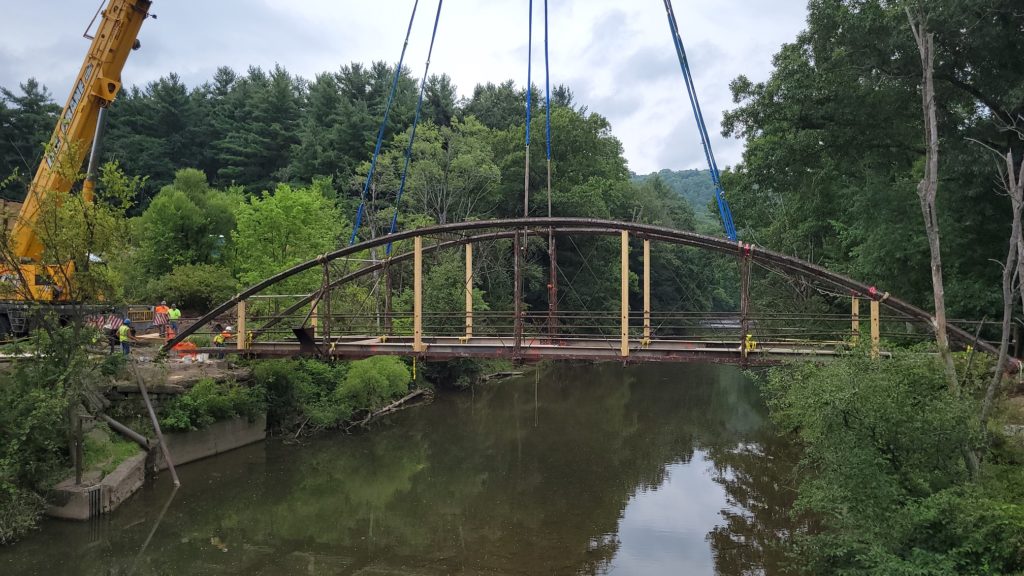
The crane operator wasted no time, and the bridge was aloft, kissing the upper branches of its longtime, shady companion; a venerable oak that was witness to the bridge’s arrival, back when Grant was president and Custer was on a march toward destiny.
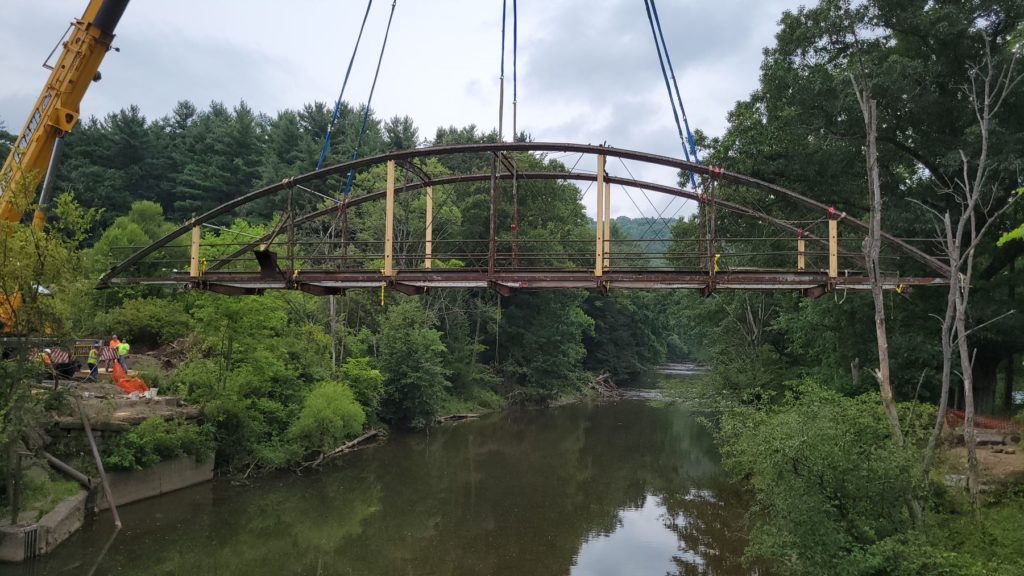
The moment was awash in reverence, anxiety, and hope. There was an overwhelming sense that an endangered species has been plucked from its roost.
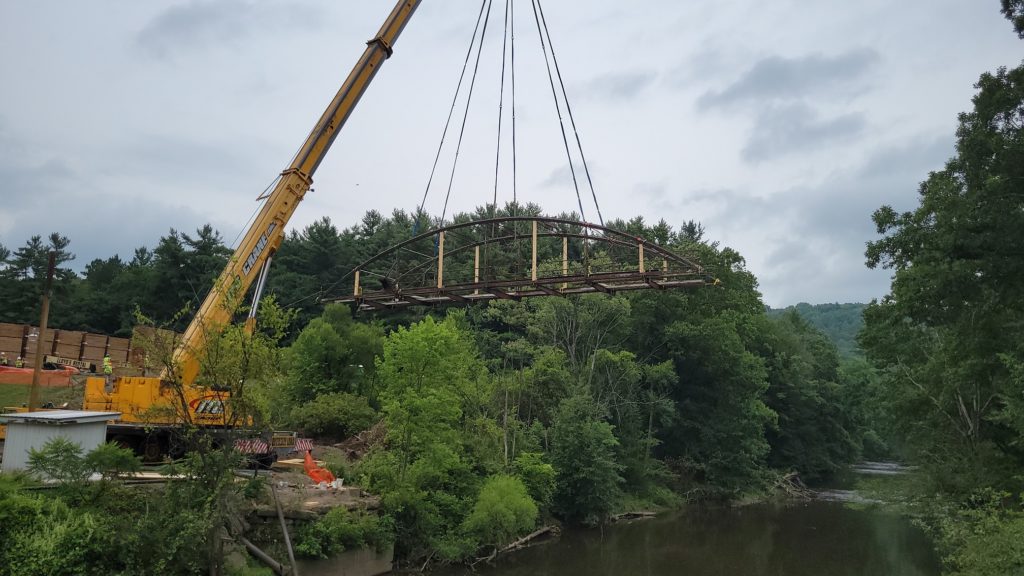
With the aerial maneuvering over, the bridge came to rest atop temporary cribbing, so arranged to aid in disassembly. There was a collective sigh of relief.
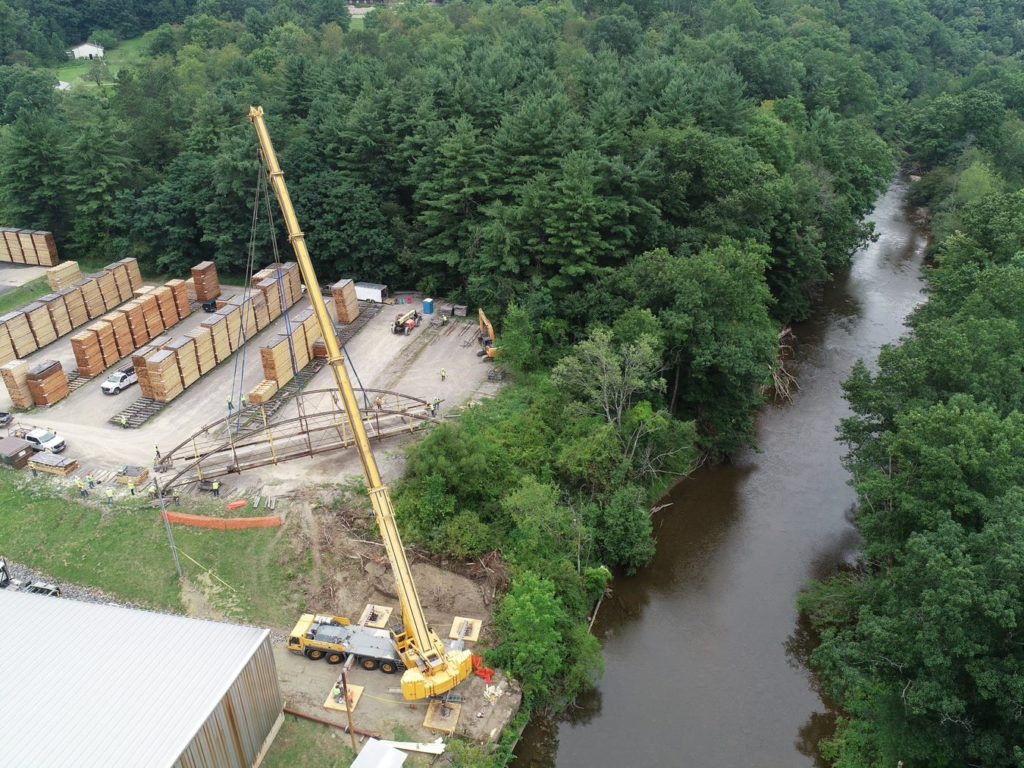
A methodical dismantling procedure soon followed, and the disassembled components made a brief trip to a cleaning facility, where the parts will be sandblasted and made ready for the rehabilitation process.
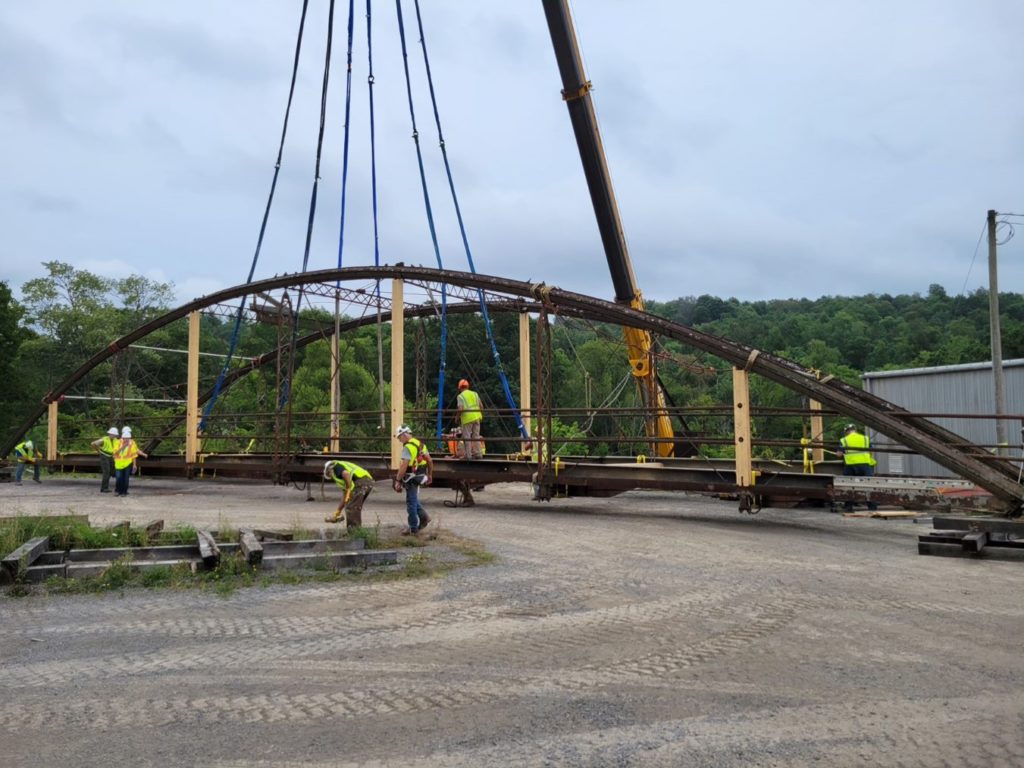
And so began the next chapter in the long and continuing story of Messerall Road Bridge.
Today’s Guest Contributor is Don Burden. Don is a Cultural Resources Specialist for the Pennsylvania Department of Transportation. His areas of interest include the history of industry, railroads, and canals. At PennDOT he devotes considerable attention to the preservation of historic metal truss bridges.
Comment Policy
PHMC welcomes and encourages topic-related comments on this blog. PHMC reserves the right to remove comments that in PHMC’s discretion do not follow participation guidelines.
Commenters and Comments shall be related to the blog post topic and respectful of others who use this site.
Commenters and Comments shall not: use language that is offensive, inflammatory or provocative (this includes, but is not limited to, using profanity, obscene, or vulgar comments); disparage other commenters or people; condone illegal activity; identify the location of known or suspected archeological sites; post personal information in comments such as addresses, phone numbers, e-mail addresses or other contact details, which may relate to you or other individuals; impersonate or falsely claim to represent a person or an organization; make any commercial endorsement or promotion of any product, service or publication.
If you would like to comment on other topics not related to this blog post but related to PHMC, please fill out the PHMC Contact Us Form.

The riveted, tubular, bow structures appear to be very similar to patented “Phoenix columns” made in Phoenixville, PA.
Do you know the origin of these?
Can you tell me the number of sections making up the tubular “bow” and the approximate radius and riveting flange height? I may be able to identify the particular column type as a Phoenix column or not.
Gary,
Vernon Mesler – Iron & Steel Preservation, HistoricBridgeRestoration.com – runs a Rivit Training School near Lansing ,Michigan. He asked for a photo of an old Bowstring Arch Bridge built abt. 1876 in Portland ,Michigan, which I sent him.
Worthwhile to contact him – Best Regards
Wonderful story – so cool!
There is one in Mt. Carbon Schulykill County PA. Come and check it out, it might be hard to see covered with brush and weeds. Need information feel free to contact me.
Hello,
How do you go about garnering interest in a historic building or structure? There is a sandstone house that was built probably in the mid 1850s that has been left to ruin. It is currently in foreclosure. It would be so sad if it was torn down.
Any help or advise as to how to move forward to preserve this building would be greatly appreciated.
Great story! So interesting and well written/photographed. Nicely done.